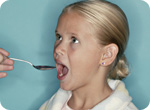
Homeopathic Alternatives to Antibiotics
Wednesday, July 09, 2008 by: DanaUllman
Tags: homeopathy, health news, Natural News
- Newly released JFK files reveal Pentagon's role in creating Lyme disease and covid in the same lab
- Dr. Suzanne Humphries makes bombshell appearance on Joe Rogan podcast, exposing vaccine industry deception back to POLIOMYELITIS
- L.A.'s rebuilding nightmare: Only 4 permits issued after fire destroys 6,000 homes
- Discovery of vast underground city beneath Giza pyramids challenges human history
- Black cumin seed oil emerges as a powerful ally against breast cancer and chronic inflammation
- Catastrophic 7.7 earthquake devastates Myanmar and Thailand; death toll could reach 100,000
- AI breakthrough slashes celiac disease diagnosis time from months to minutes
- The hidden battle in your glass: How A1 and A2 milk could shape your health
- Sugar-free deception: Artificial sweeteners hijack hunger signals, fuel obesity epidemic, study warns
- Europe braces for WAR as EU urges citizens to STOCKPILE FOOD, in latest provocations with Russia
- Putin vows to 'finish off' Ukraine, accuses West of prolonging the war
- Thomas Massie’s Dual Loyalty Disclosure Act aims to restore American sovereignty by cracking down on foreign influence in Congress
- Aluminum pollution: A silent threat to human health
- Tesla owners under siege: Road rage, vandalism and political backlash fuel fear among drivers nationwide
- Chaos in Amsterdam: Five injured in broad daylight knife attack near Dam Square
- Kiss Your Genetic Privacy Good-Bye! 23andMe Gets Green Light to Sell Your Intimate Genetic Details to Anyone They Want
- "Feel G.O.O.D. Gut Health Program" on BrightU: Dr. Basima Williams introduces the Feel-Good Plate Method
- Trump's 25% auto tariffs: A bold move to strengthen U.S. manufacturing despite short-term challenges
- Newly released JFK files reveal Pentagon's role in creating Lyme disease and covid in the same lab
- Analysis: The coming economic collapse, a mass uprising and Trump's three secret weapons to halt the growing revolt
- Trump nominates VACCINE ZEALOT Susan Monarez to lead the CDC, sidelining RFK Jr.'s reform efforts
- Trump's greatest betrayal so far: Accelerating Middle East wars, silencing dissent, and serving Zionist masters
- Dr. Mike Yeadon releases 15-minute testimony - WATCH - about genocidal intent of COVID “vaccines”
- Festive flavors: The sweet history, nutritional profile and health benefits of pecan pie
- Elon Musk: Aliens could be here on Earth RIGHT NOW
- Big Pharma's $8 Billion bribery scheme exposed: how doctors are pushed to prescribe junk science, not heal
- 5 Simple steps to boost your brainpower: How to strengthen executive function in a distracted world
- Trump reverses course on Gaza plan, says “nobody is expelling Palestinians”
- A lack of integrity in Academia: Harvard professor found GUILTY of fraudulent research to promote CRT theory
- Reclaim your health: How midlife exercise reverses years of inactivity
- Survival 101: Effective EMF blocking techniques
- Florida takes a stand: DeSantis proposes permanent ban on mRNA vaccine mandates
- Sugarcane extract superior to cholesterol-lowering drugs?
- California's social media censorship law struck down: A victory for free speech or a threat to online safety?
- OpenAI whistleblower who dissented against how the company trained ChatGPT found dead
- EPA advisor admits the agency is funneling billions to climate groups ahead of Trump’s return to White House
- EPA advisor admits the agency is funneling billions to climate groups ahead of Trump’s return to White House
- Newly released JFK files reveal Pentagon's role in creating Lyme disease and covid in the same lab
- California's social media censorship law struck down: A victory for free speech or a threat to online safety?
- Dr. Mike Yeadon releases 15-minute testimony - WATCH - about genocidal intent of COVID “vaccines”
- The Health Ranger releases “Vaccine Zombie” song and music video, using AI-animated zombies for the music video
- The pandemic as a tool for INDOCTRINATION: Understanding “The Indoctrinated Brain” by Dr. Michael Nehls
- Florida takes a stand: DeSantis proposes permanent ban on mRNA vaccine mandates
- “Why we influenced the 2020 elections”: Facebook files reveal the coordinated effort to bury the Hunter Biden laptop story
- Mike Adams releases country western hit single: Goin’ Back in Time is Comin’ Home
- Mike Adams releases music poetry sensation: A Child of God
- Unpacking the Lies That We’ve Been Fed – new song and music video released by Mike Adams, the Health Ranger
- Michigan sheriff announces criminal investigation into 2020 election crimes, Dominion Voting Systems
- Migrants are taking advantage of recent hurricanes to scam residents and loot their homes
- House Intelligence Committee calls for the ARREST and PROSECUTION of Dr. Anthony Fauci
- RFK Jr. clears key hurdle: Sen. Susan Collins backs controversial HHS nominee, signaling a new era for health policy
- Rep. Nancy Mace introduces bill to ban biological males from female facilities on federal property
- Peter Rost exposes Big Pharma corruption in his book “The Whistleblower: Confessions of a Healthcare Hitman”
- Mike Adams releases new song and music video: Nothing More Disgusting Than a Globalist
- Red Cross issues warning to stop blood plasma donations from vaccinated people
- Scientists confirm: GENIUS brain function can be spontaneously unleashed in humans without any apparent cause
- EPA advisor admits the agency is funneling billions to climate groups ahead of Trump’s return to White House
- HYSSOP: What research reveals about the health benefits of this ancient holy herb
- Two containers with completed ballots fall out of truck in Florida
- Fully vaccinated about to see “tsunami” of illness and death, warns virologist
- Global leaders unite to clamp down on “misinformation” with UN-backed Cascais Declaration
- BREAKING: 2025 NDAA authorizes mandatory military draft of WOMEN across America… as Pentagon pursues global NUCLEAR war with both Russia and China at the same time
- Michael Yon warns of a ZIONIST TAKEOVER in Trump’s second administration
- BOMBSHELL: DNA testing kits are a SCAM to develop ethnic-specific bioweapons
- Ozempic and Wegovy weight loss drugs are injectable LIZARD VENOM PEPTIDES that may unleash a devastating wave of organ failure… side effects align with symptoms of SNAKE BITES
- Israeli soldiers accused of even more torture and abuse in the West Bank
- These 13 countries just signed an agreement to engineer a global FAMINE by destroying food supply
- NASA admits that climate change occurs because of changes in Earth’s solar orbit, and NOT because of SUVs and fossil fuels
- RFK Jr. clears key hurdle: Sen. Susan Collins backs controversial HHS nominee, signaling a new era for health policy
- Sermon 30: How Jesus reveals Caesar’s FAKE CURRENCY and FALSE AUTHORITY
- Coriander seeds: Ancient medicine backed by modern science
- Arizona officials claim Maricopa County needs 10-13 days to tabulate results of the election
If homeopathy can have such significant results in treating people suffering from these serious infectious diseases, there is little doubt that it can be similarly effective in treating the various common infectious diseases today.
And yet, the average American knows little or nothing about homeopathy. Even many people who are passionate about alternative medicine know little about the science and art of homeopathy.
What is so different about homeopathy?
Homeopathic medicines are not just composed with different medicinal ingredients, and they are not just the use of smaller doses of medicines. Homeopathy represents a different approach to understanding disease and health.
Like modern-day physiology and pathology, homeopaths understand that symptoms are not just something "wrong" with the person but that symptoms are defensive adaptations of the human body in its best efforts to fight infection and/or to adapt to stress. From this perspective, it does not make sense to use pharmacological therapies to inhibit, control, or suppress symptoms since such methods tend to reduce the body's inherent self-healing responses.
Instead, homeopaths use medicinal agents that have been found to cause in healthy people the similar syndrome of symptoms that sick people experience. The very word "homeopathy" is derived from two Greek words, "homoios" which means Similar and "pathos" which means Suffering or Disease. This is why the basic premise of homeopathy is called the "principle of similars." Because symptoms are the ways that the body is trying to heal itself, it makes sense to use medicines that are similar to and that augment their body's wisdom, rather than suppress it. It is not a coincidence that immunizations and allergy treatments are two of the very few conventional medical treatments that help strengthen the immune system to prevent or treat disease, and they use relatively small doses of substances for conditions that they are known to cause in overdose.
What also makes homeopathy different (and sometimes more difficult) than conventional medicine is that homeopathic medicines are not prescribed to treat a specific or localized disease but are prescribed to treat specific syndromes of symptoms of which one's disease is just one part. In other words, two people may have the common cold, but one would have a thin watery nasal disease that irritates the nostrils, frequent sneezing, and a mild headache, all of which are aggravated in warm rooms. The other would have thick yellowish nasal discharge that doesn't irritate the nostrils, nasal congestion alternating with nasal discharge, a cough that is relieved in the open air, and no thirst.
It is remarkable how many normally smart people, including many health professionals, mistakenly assume that people with the same conventional diagnosis should be prescribed the same medicine even though they tend to have such different symptoms. While it may be more easy and convenient to give people with the same diagnosis the same medicine, individualization of treatment makes sense... and in homeopathy, it works wonderfully well.
In homeopathy, a medicine is not prescribed based on the disease that the person has but on the unique pattern or syndrome of symptoms that are experienced. In the above example, the first person would be prescribed Allium cepa (the common onion), while the second person would be given Pulsatilla (an herb called windflower).
Jonas Salk, MD, the famed medical researcher, once said that there were two basic approaches to treating sick people: the conventional model of medicine which seeks to diagnose and treat a specific pathology and the holistic model of healing which seeks to strengthen host resistance. Needless to say, homeopathy is an integral part of this second school of thought in medicine.
There are no "homeopathic antibiotics" or "homeopathic anti-viral agents" because every correctly prescribed homeopathic medicine has the potential of strengthening a person's own immune and defense system in a way that helps to fight bacterial or viral infection.
The Logic of Homeopathy in Infectious Disease Treatment
It is commonly assumed that bacteria and viruses "cause" disease, and it is heretical to consider otherwise. And yet, most of us have various bacteria and viruses in our body right now despite the fact that we are not sick.
The reason that some people get ill and others do not is what biologists call "host resistance" and what physicians refer to as "susceptibility." Basically, it is understood that infection is the result of two factors: exposure to a pathogen and the person's present state of health. From this perspective, bacteria and virus are not the cause of disease but at best are a "co-factor" to disease.
One "take-home" message from this logical (and obvious) analysis of infectious disease is that taking a conventional antibiotic or antiviral drug may get rid of the pathogen, but they do not do anything to strengthen a person's host resistance or immune system. In fact, there is ample evidence that these conventional drugs actually increase the chances of re-infection.
The second take-home message is that one should consider ways to strengthen his or her own immune and defense system... and homeopathy is one important way to do this.
Evidence of Success with Homeopathy
Skeptics of homeopathy mistakenly assert that there is no research that verifies its efficacy. In actual fact, skeptics who assume this are simply showing their own ignorance and their own unscientific attitude.
An impressive international study that involved 30 clinicians in 6 clinics in 4 countries enrolled 500 consecutive patients with upper respiratory tract complaints, lower respiratory tract complaints, or ear complaints. The study found 83% of patients receiving homeopathic care experienced improvement, while only 68% of those receiving a conventional medication experienced a similar degree of improvement. The study also found that those people given a homeopathic experienced more rapid relief: 67.3% experienced improvement with homeopathy within 3 days, while only 56.6% of patients given conventional medicines experienced improvement (16.4% of homeopathic patients improved within 24 hours; 5.7% in other group).(Riley, et al, 2001)
The #1 reason that parents take their child to a physician today is for ear infection. A study published in a major pediatric journal found that there were 19.9% more treatment failures in children given a placebo than those given a homeopathic medicine. The study also found a significant decrease in symptoms at 24 and 64 hours after treatment in favor of those given a homeopathic medicine.
The homeopathic medicine that has undergone a significant number of studies is the popular flu remedy Oscillococcinum. Three large-scale studies (over 300 patients in each) conducted by three groups of independent researchers have consistently found positive results in using this remedy to treat influenza (Vickers and Smith, 2005). Because conventional medicine has nothing to offer this all-too-common viral illness, it is good to know of a safe and effective remedy. However, it is useful to know that this remedy is primarily useful when it is taken within 48 hours of the onset of symptoms.
Examples of Homeopathic Medicines
There are several simple homeopathic medicines that can be used by anyone to treat many kinds of infections. The trick to using them effectively is to remember that they are not used to treat only one type of disease but are effective in treating the "syndrome" of symptoms that each is known to cause (when taken in overdose in experiments). It is also helpful to mention that homeopathic medicines are listed by their Latin name in order to be precise with the specific substance being used.
Aconitum (monkshood) is sometimes called "homeopathic vitamin C" because it is commonly used at the first symptoms of infection (respiratory infection, influenza, sore throat, ear infection, bladder infection). It is indicated when symptoms start rapidly and are intense. Usually, there is a high fever (not higher than 103 degrees), strong thirst, restlessness, and may begin after being chilled or after a sudden fright, anger, or shock.
Belladonna (deadly nightshade) is useful for various types of infections, especially when the person is feverish with flushed, reddened skin and mucous membranes, with palatable feelings of heat radiating off the body. It is indicated when the person's senses are hyperacute, and the person is aggravated by noise, touch, light, or jarring motion. The sick person may be delirious and will tend to experience vivid dreams (children will say that they see ghosts or scary things).
Pulsatilla (windflower) tends to be much more commonly given to women and children for various infections. It is particularly useful for people who are very emotional, moody, and desire sympathy. These people do not tend to have much thirst, even if they have a fever. They feel worse in a warm room and desire open air. If they have a cold or cough, their mucus tends to be thick and yellow or yellow-greenish, and their symptoms are usually worse at night.
In addition to homeopathic medicines that are composed of specific single ingredient substances, there are also "homeopathic formulas," that is, combinations of 2 to 10 ingredients. These formulas are very simple to use because they are usually made with some of the most commonly prescribed remedies known to be effective in treating people with a specific ailment, and these products are marketed based on a specific disease name (Because the FDA recognizes homeopathic medicines are "over-the-counter drugs," it is perfectly legal for homeopathic manufacturers to give a disease indication on the label, as long as the disease is self-limiting and does not require a medical diagnosis).
Homeopaths generally find that the individually-chosen single ingredient homeopathic remedy is more apt to provide faster and more certain results, but if you don't know how to select a homeopathic medicine for you or a family member, it is good to know that "user-friendly" homeopathic formula products are readily available and are often wonderfully effective.
To learn how to select an individually chosen remedy, consider getting a homeopathic self-care guidebook, such as Everybody's Guide to Homeopathic Medicines by Stephen Cummings, MD, and Dana Ullman, MPH or Homeopathic Medicines for Children and Infants by Dana Ullman, MPH. To better understand what homeopathy is and to learn about why so many of the smartest, most successful, and most famous people of the past 200 years used or advocated for homeopathy, see The Homeopathic Revolution: Why Famous People and Cultural Heroes Choose Homeopathy by Dana Ullman.
If a person experiences repeated infection or experiences particularly intense symptoms, you should seek professional homeopathic and/or medical care. Because homeopathy is a method of strengthening a person's overall immune and defense system, it should be seriously considered as a treatment of choice to people who are prone to infection.
References:
T.L. Bradford, The Logic of Figures. Philadelphia: Boericke and Tafel, 1900.
D Riley, M Fischer, B Singh, et al, Homeopathy and Conventional Medicine: An Outcomes Study Comparing Effectiveness in a Primary Care Setting, Journal of Alt and Comp Med, 7,2,April, 2001:149-60.
J Jacobs, DA Springer, D Crothers, Homeopathic Treatment of Acute Otitis Media in Children: A Preliminary Randomized Placebo-controlled Trial, Pediatric Infectious Disease Journal, 20,2 (February 2001):177-183.
Vickers A. J., and Smith, C. Homoeopathic Oscillococcinum for preventing and treating influenza and influenza-like syndromes, Cochrane Review, The Cochrane Library, 2005, Issue 4.
About the author
DANA ULLMAN, MPH, is one of America's leading spokespersons for homeopathy. He has authored nine books, including The Homeopathic Revolution: Why Famous People and Cultural Heroes Choose Homeopathy, Homeopathy A-Z, Homeopathic Medicines for Children and Infants, and (the best-selling) Everybody's Guide to Homeopathic Medicines (with Stephen Cummings, MD). Dana has served on advisory boards of alternative medicine institutes at Harvard, Columbia, and University of Arizona schools of medicine. He is the founder of Homeopathic Educational Services (http://www.homeopathic.com), America's leading resource center for homeopathic books, tapes, medicines, software, and correspondence courses.Homeopathy at FETCH.news
Get independent news alerts on natural cures, food lab tests, cannabis medicine, science, robotics, drones, privacy and more.
Take Action: Support Natural News by linking to this article from your website
Permalink to this article:
Embed article link: (copy HTML code below):
Reprinting this article:
Non-commercial use OK, cite NaturalNews.com with clickable link.
Follow Natural News on Facebook, Twitter, Google Plus, and Pinterest
Science News & Studies
Medicine News and Information
Food News & Studies
Health News & Studies
Herbs News & Information
Pollution News & Studies
Cancer News & Studies
Climate News & Studies
Survival News & Information
Gear News & Information
News covering technology, stocks, hackers, and more



"Big Tech and mainstream media are constantly trying to silence the independent voices that dare to bring you the truth about toxic food ingredients, dangerous medications and the failed, fraudulent science of the profit-driven medical establishment.
Email is one of the best ways to make sure you stay informed, without the censorship of the tech giants (Google, Apple, Facebook, Twitter, YouTube, etc.). Stay informed and you'll even likely learn information that may help save your own life."
–The Health Ranger, Mike Adams












































